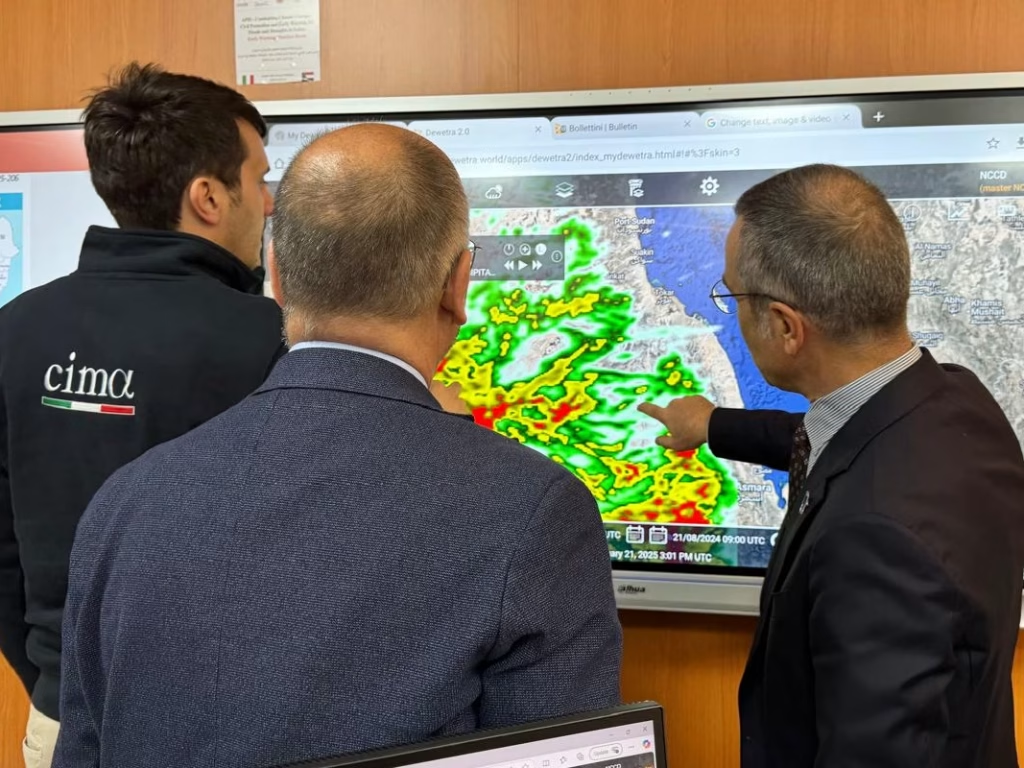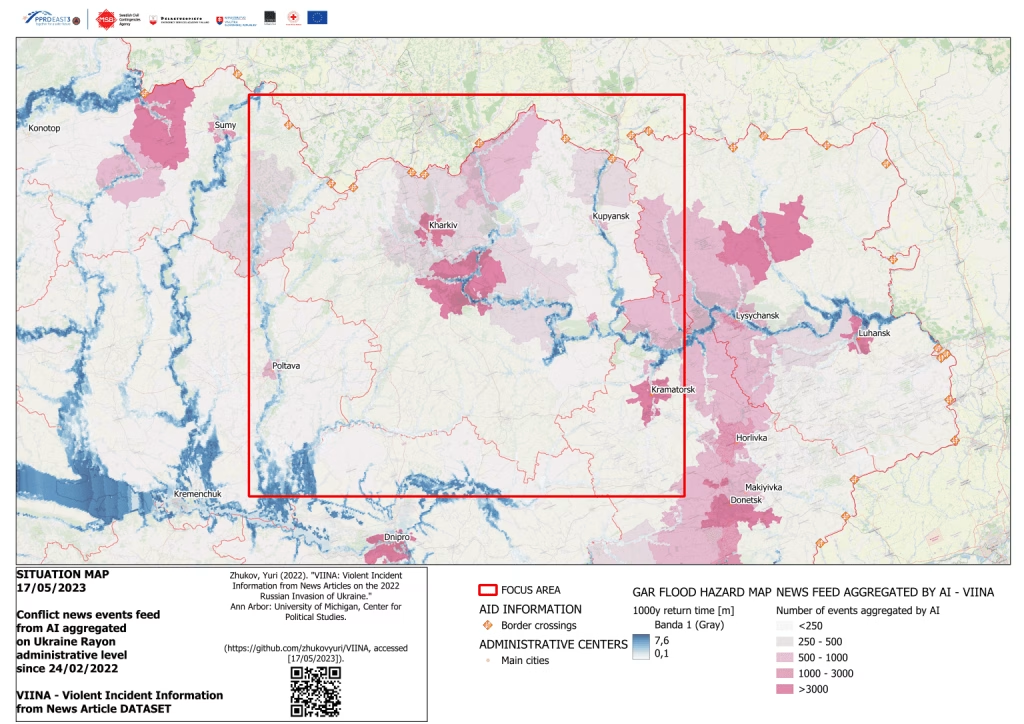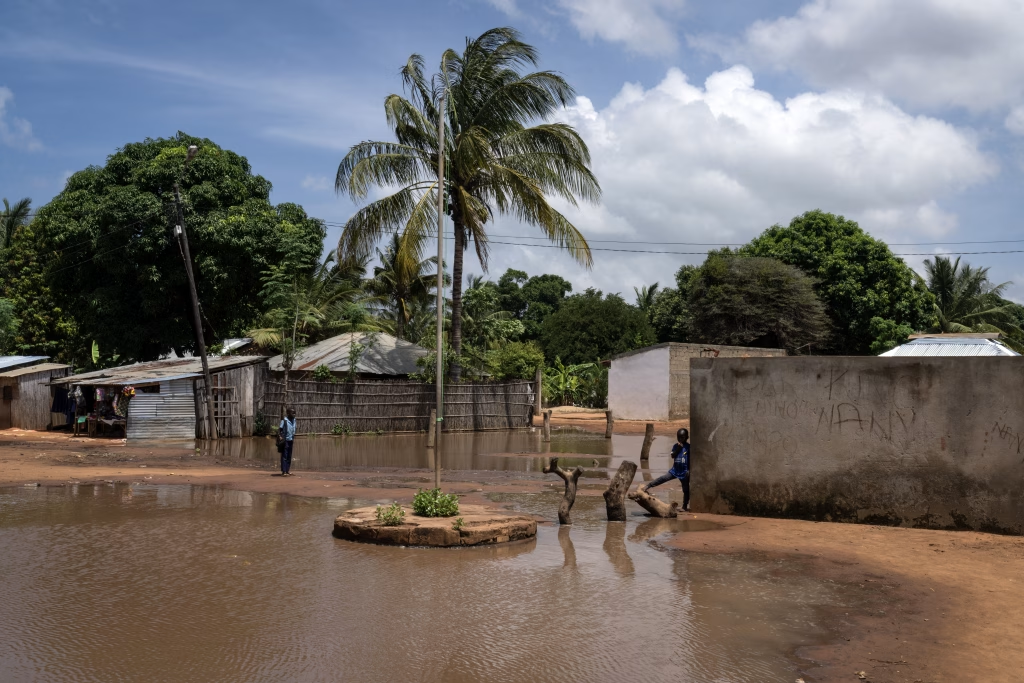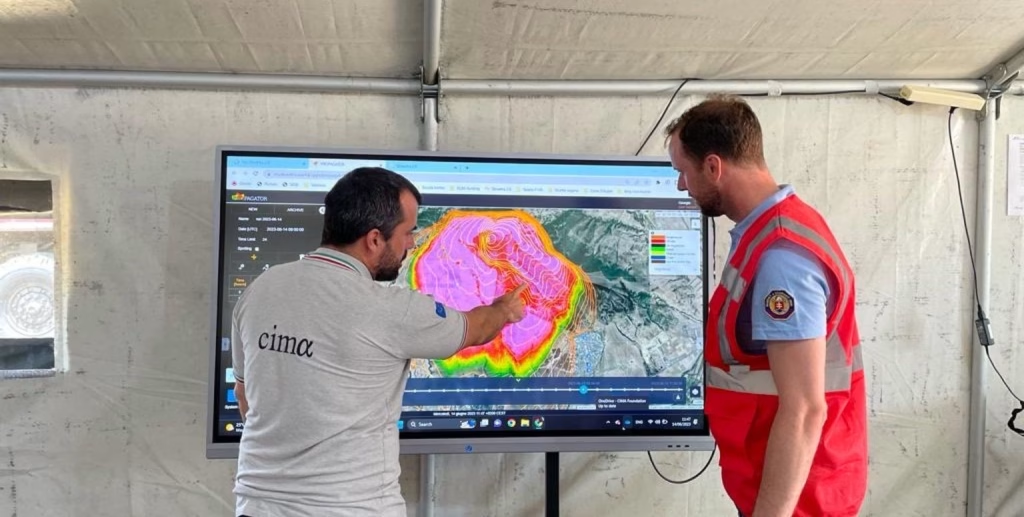Every day, millions of people around the world face increasing vulnerability due to extreme events, conflict, inequality, and climate change. On August 19, the World Humanitarian Day honours those who work on the front lines of humanitarian crises. Although CIMA Research Foundation is a research organization, it shares with humanitarian actors the same fundamental goal: the protection of people and ecosystems.
At the core of CIMA Research Foundation’s work lies the belief that knowledge can be a form of protection. Early warning systems, predictive modelling and environmental monitoring technologies are not only the outcome of years of research — they can be humanitarian tools. In contexts marked by fragility, poverty or conflict, they offer a concrete opportunity to anticipate hazards, reduce impacts, and ultimately, save lives.
This is where scientific work converges with humanitarian assistance: a form of support that is often invisible, yet decisive. Because unlike emergency operations or aid delivery, it does not leave visible traces — but builds, over time, the conditions to make those interventions faster, more effective, or even unnecessary.
Early warning in conflict contexts
In Sudan, through the APIS project funded by the Italian Agency for Development Cooperation (AICS), CIMA Research Foundation contributed to the development of early warning systems for floods and droughts, integrating advanced technologies with local knowledge. In a setting affected by ongoing humanitarian crises, timely access to reliable information can mean the difference between safety and loss, between resilience and displacement.

In Ukraine, under the EU-funded project PPRD East 3, CIMA developed — in cooperation with the Italian Red Cross — an Impact-Based Forecast (IBF) system to support humanitarian planning.
The daily weather bulletin, shared with 14 institutional partners, integrates eight critical variables (such as temperature, wind, precipitation and snow) with humanitarian indicators, including the presence of IDPs, mobile clinics, and refugee shelters. Forecasts extend up to 144 hours and cover all 24 regions of Ukraine as well as neighbouring areas. This tool helps improve the timeliness and effectiveness of field-level response. In parallel, CIMA Research Foundation has produced multi-risk maps that combine data on floods, wildfires and unexploded ordnance (UXO), identifying areas most exposed to cascading effects and strengthening civil protection in highly complex contexts.

Early warning and displacement risk
In the Nile Basin region, through collaborations with national and regional meteorological and hydrological services and projects coordinated with IGAD-ICPAC, CIMA supports institutional capacity strengthening for managing emerging climate risks. The models developed help anticipate the evolution of extreme weather phenomena and enable faster, better-coordinated and more informed decisions. This, too, is humanitarian assistance: equipping communities to act before, not after, disaster strikes.
Since 2024, through the Ready2Act project, CIMA Research Foundation has launched a training programme for disaster risk management personnel in Horn of Africa countries. The goal is to strengthen operational capacity in emergency preparedness and response, using practical tools and a shared approach to disaster risk governance. Training modules include early warning, command and control systems, logistics, and protection of vulnerable communities — building a common, interoperable language among technical and institutional stakeholders across the region.

Still within the IGAD region, CIMA Research Foundation also collaborates with the Internal Displacement Monitoring Centre (IDMC) on the development of methodologies to assess the risk of climate-induced displacement. A probabilistic model has been built to estimate displacement flows by integrating physical, socio-economic and perceptual variables. In pilot areas such as Sudan, the model has been tested to evaluate mitigation strategies using an agent-based approach, incorporating behavioural patterns, risk perception and the lived experiences of affected communities.
Science for cooperation and human dignity
CIMA Research Foundation’s commitment to humanitarian settings is the result of more than a decade of work in cooperation with the Italian Cooperation System, international partners and local authorities. From risk reduction initiatives in the Caribbean in 2010 to more recent activities in Sudan, Lebanon, Vietnam, Ethiopia and Mozambique — and future projects in the Balkans, Libya and Southeast Asia — the Foundation has developed tools, expertise and relationships to enhance resilience in communities exposed to complex and multi-dimensional risks. An evolving commitment, but grounded in a clear vision: putting science at the service of safety, cooperation and human dignity.
The approach adopted by CIMA Research Foundation in every project is rooted in an ethical vision of science — one that listens, collaborates and empowers. A science that does not impose, but enables. One that values local knowledge and integrates it with global perspectives.
On this World Humanitarian Day, CIMA Research Foundation recalls that behind every algorithm, every dataset, and every predictive model, there are people. People who act, who collaborate, who care. And who believe in a science in the service of humanity.
